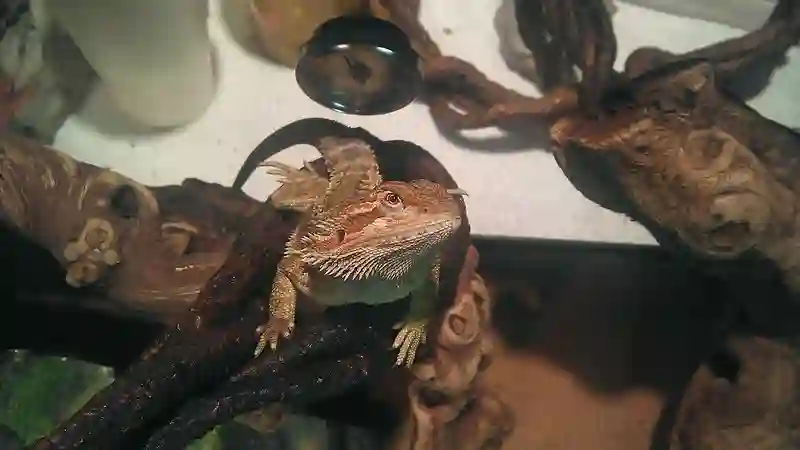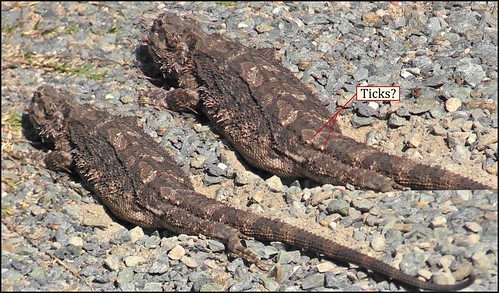It is common knowledge that bearded dragons, like other reptiles, shed their skin. This natural process occurs regularly throughout their lifetime as they grow and adapt to their surroundings.
Shedding can help rid the dragon of parasites and dead skin cells, but sometimes the shed becomes stuck on certain parts of the body, such as on the tail.
As a professional in reptile care, I will provide you with a brief introduction on how to safely remove a stuck shed from a bearded dragon’s tail using advanced techniques and methods.
Common Areas Where Shedding Can Get Stuck
While shedding can occur all over a bearded dragon’s body, there are certain areas where shedding is more likely to get stuck. The most common areas include toes, tail tips, head creases as well as around the ears. The tail tip is especially prone to retaining shed since it’s easy for it to get caught on rocks, logs or other materials found in your bearded dragon’s enclosure.
Preparing to Remove Stuck Shed from Bearded Dragon Tail
Gather necessary materials
Before attempting to remove the stuck shed from your bearded dragon’s tail, it is important to gather all the necessary materials. These include warm water, a soft-bristled toothbrush, and a clean towel.
The water should be warm but not too hot as it may cause burns or discomfort to your bearded dragon. The toothbrush should have soft bristles so as not to damage the skin or scales of your pet.
Create a comfortable and safe environment
Bearded dragons are sensitive creatures and can get easily stressed if they are in an uncomfortable environment. Therefore, it is crucial that you create a comfortable and safe space for your pet before proceeding with removing the stuck shed.
Place your bearded dragon in a quiet room away from any loud noises or sudden movements that can startle them. Also, make sure that their enclosure has enough space for them to move around comfortably.
Soak the tail in warm water
Soaking the tail in warm water for 10-15 minutes can help loosen any stuck shed and make it easier to remove. Fill a shallow container with warm water (around 90°F) and place your bearded dragon’s tail in it.
Make sure that only the tail is submerged in water as soaking the entire body may cause stress or discomfort. You can also add a few drops of vegetable oil or reptile shedding aid into the water to further soften up any stubborn areas of stuck shed.
By following these steps, you will have created an ideal environment for removing stuck sheds from your bearded dragon’s tail while minimizing potential harm or stress on your pet. In the next section, we will discuss how to effectively remove any remaining stuck shed without harming your pet.
Removing Stuck Shed from Bearded Dragon Tail
Gently Brush the Tail with a Soft-Bristled Toothbrush to Remove Any Loose Shed
Once your bearded dragon’s tail has soaked in warm water for about 15 minutes, it’s time to start removing the loosened shed. Start by gently brushing the tail with a soft-bristled toothbrush. With gentle strokes, brush away any loose shed that comes off easily.
This will help you see where the stuck shed is and how much work you have ahead of you. Be sure to use a soft-bristled toothbrush to avoid injuring your bearded dragon’s skin or scales.
Brush in the direction of the scales, starting at the base of the tail and working towards the tip. Don’t apply too much pressure or scrub aggressively as this can cause injury.
Use Your Fingers to Gently Peel Away Any Remaining Pieces of Stuck Shed
After brushing away any loose shed, it’s time to focus on removing those stubborn pieces that are still stuck on your bearded dragon’s tail. Use your fingers to gently peel away any remaining pieces of stuck shed. Start at the base of the tail and work towards the tip.
When peeling away stuck pieces of shed, make sure not to tug or pull on your bearded dragon’s skin or scales as this can cause injury or pain to your pet. If you encounter resistance while trying to remove stubborn pieces of shed, simply stop and try again later.
Avoid Pulling or Tugging on Skin or Scales
It cannot be overstated how important it is not to pull or tug on your bearded dragon’s skin or scales while removing stuck shed from its tail. It can cause injury and lingering pain for your pet, which could lead to them not trusting you in future interactions. Always work slowly and patiently when removing stuck sheds from your bearded dragon’s tail.
If you’re struggling to remove stubborn pieces of shed, don’t hesitate to seek advice from a professional veterinarian or reptile expert. Remember that your bearded dragon’s health and well-being are of utmost importance.
Aftercare for Your Bearded Dragon
Dry off your bearded dragon with a clean towel after soaking.
After removing the stuck shed, it’s important to dry off your bearded dragon thoroughly. Use a clean towel to gently pat the tail dry.
Avoid rubbing too hard, as this can cause irritation. Ensure that there is no water left on the tail or other parts of the body.
Provide plenty of water and hydration.
Bearded dragons require plenty of hydration to stay healthy and prevent further shedding problems. Make sure they have access to fresh drinking water at all times. Additionally, consider adding humidity by misting their enclosure or providing a humid hide.
Conclusion
Removing stuck sheds from a bearded dragon’s tail can seem like a daunting task, but with patience and care, it can be done successfully. Regularly monitoring your pet for signs of shedding problems can help prevent the issue from becoming severe or causing further complications.
Remember to always provide adequate hydration and moisture levels in their environment to keep them healthy and happy. By taking these steps, you’ll ensure that your beloved pet remains comfortable throughout their shedding process and will continue to thrive for years to come.


